Sufganiyot (Israeli Donuts)
This post may contain affiliate links. Read my full disclosure policy.
A cross between a beignet and a jelly donut, sufganiyot are pillowy donuts that are eaten in Israel and around the world during Hanukah.
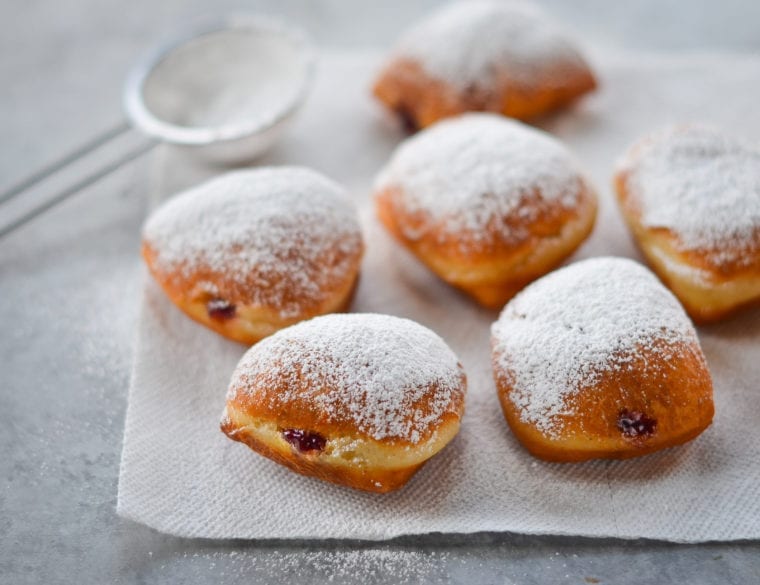
A cross between a beignet and a jelly donut, sufganiyot are pillowy donuts eaten in Israel and around the world during Hanukkah, when foods fried in oil symbolize the miracle of oil that burned for eight days instead of one in the Hanukkah story. Sufganiyot are traditionally filled with jelly or jam, but if your crew doesn’t care for jelly in their donuts (my son once described biting into a jelly donut as “a terrible surprise”), the filling options are limitless: custard, Nutella, pudding, pumpkin butter, apple butter, or dulce de leche are all great options. Sufganiyot are also delicious plain.
Table of Contents
“Wow! I’m so grateful for this no-knead recipe! I was able to make these fairly easily, and I am no star baker. They came out great — I’m so proud!”
I know that making donuts at home can seem a little daunting because yeast and hot oil are involved but, I promise, it really is simple—and this recipe is faster and easier than most because the dough is not kneaded and requires only a single rise. If you need a little encouragement to give donut-making a shot, watch this video of celebrated cookbook author and authority on all Jewish food-related things, Joan Nathan, making sufganiyot in Jaffa, Israel. It makes me want to hop on a plane!
What You’ll Need To Make Sufganiyot
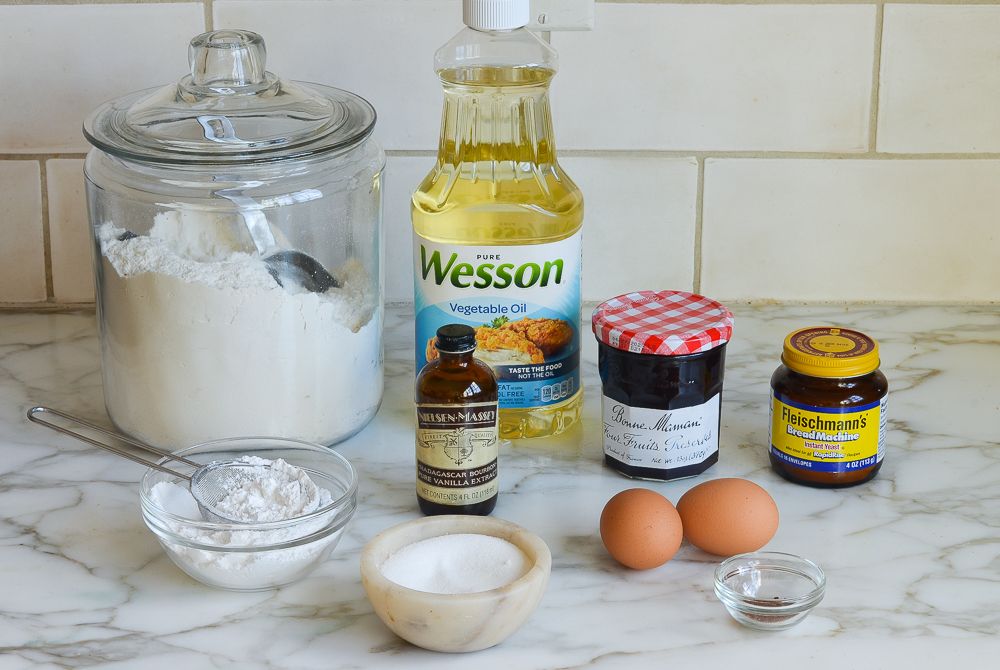
How To Make Sufganiyot
To begin, combine the warm water and yeast in a small bowl and let sit until foamy, about 5 minutes.
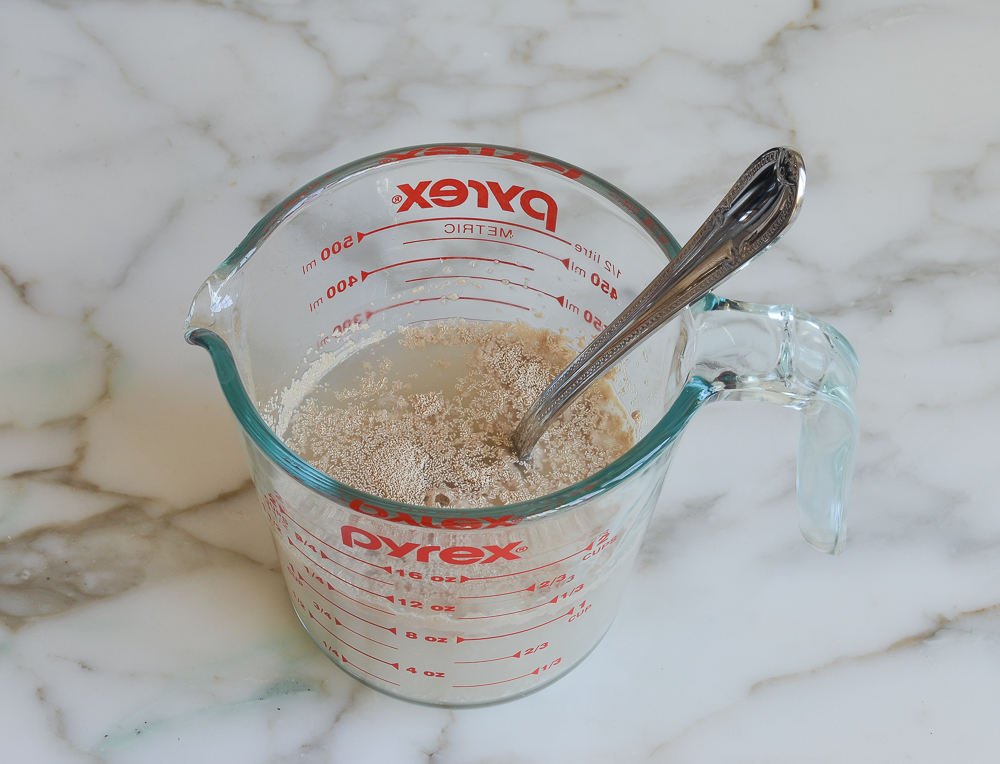
Warm water helps activate the yeast. The temperature doesn’t need to be exact so no need to use a thermometer; just try to get it about the temperature of bath water. (If you place your hand under the stream of water in the faucet, it should feel hot but you should be able to leave your hand there without it stinging.)
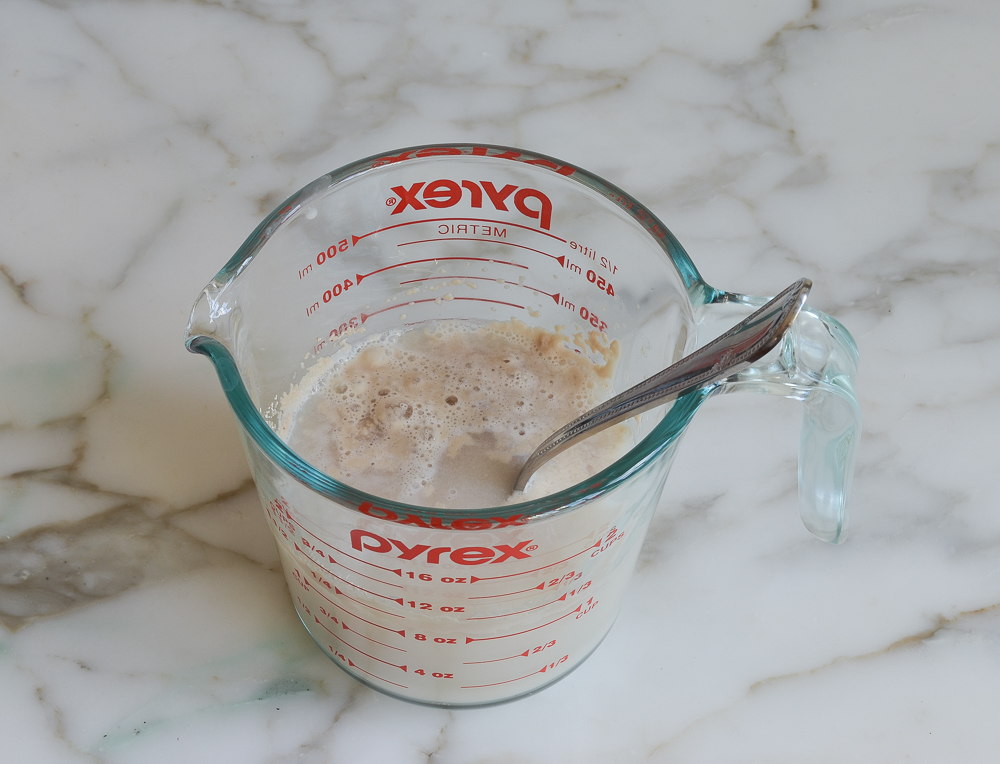
Add the egg yolks, 2 tablespoons of oil, and vanilla to the water/yeast mixture and whisk with a fork until combined.
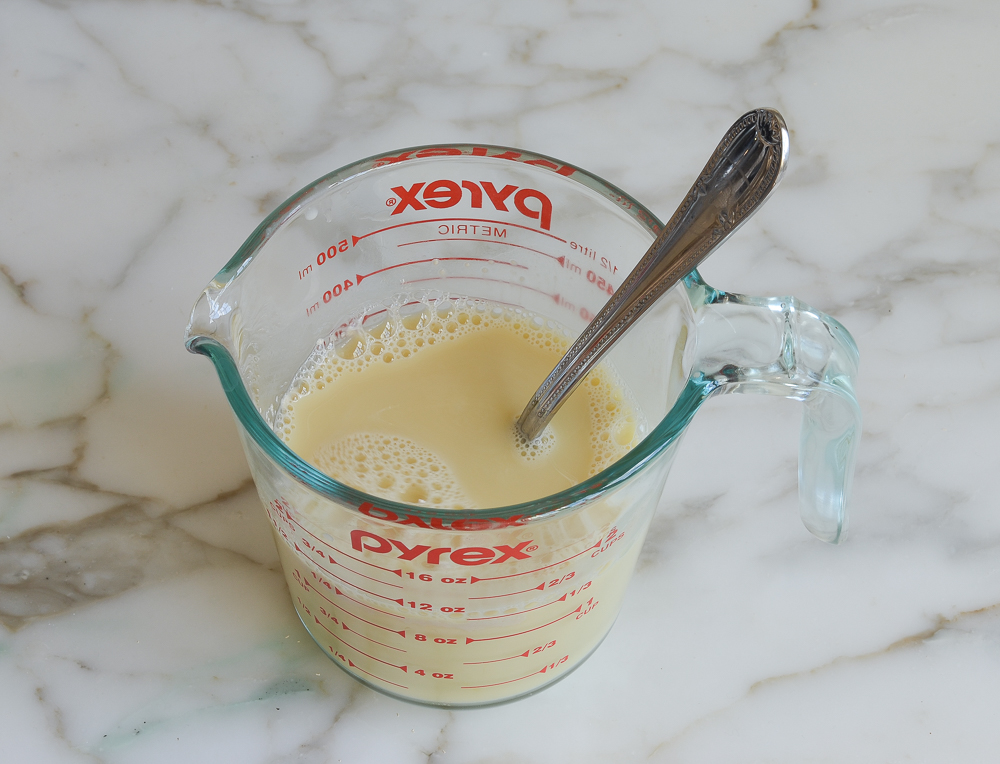
Meanwhile, in a large bowl, combine the flour, confectioners’ sugar, salt, and nutmeg.
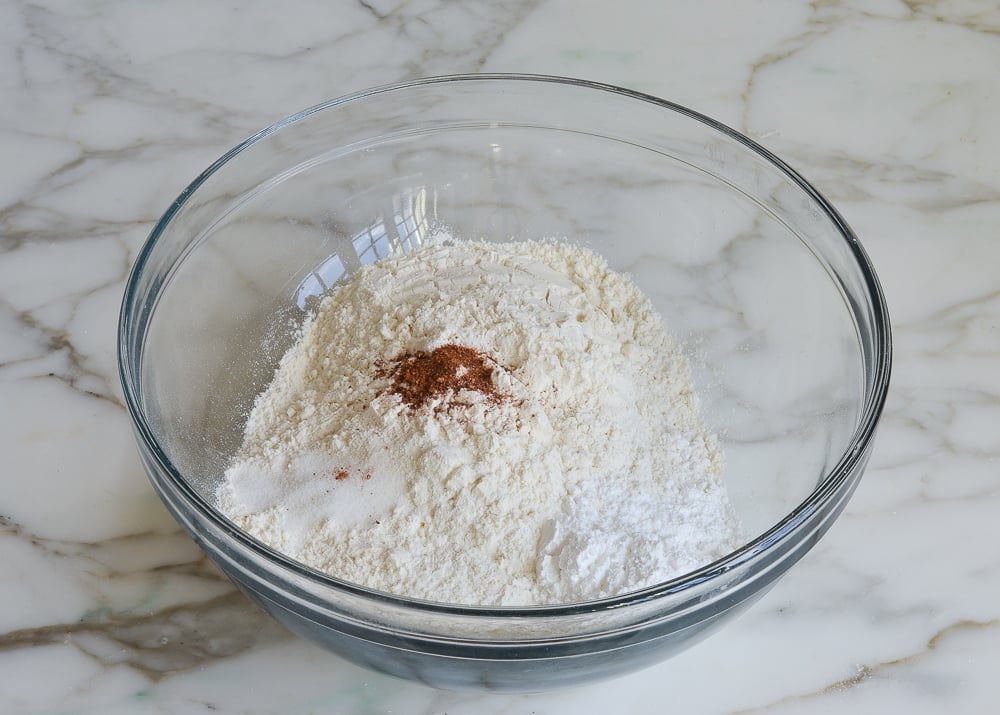
Whisk to combine.
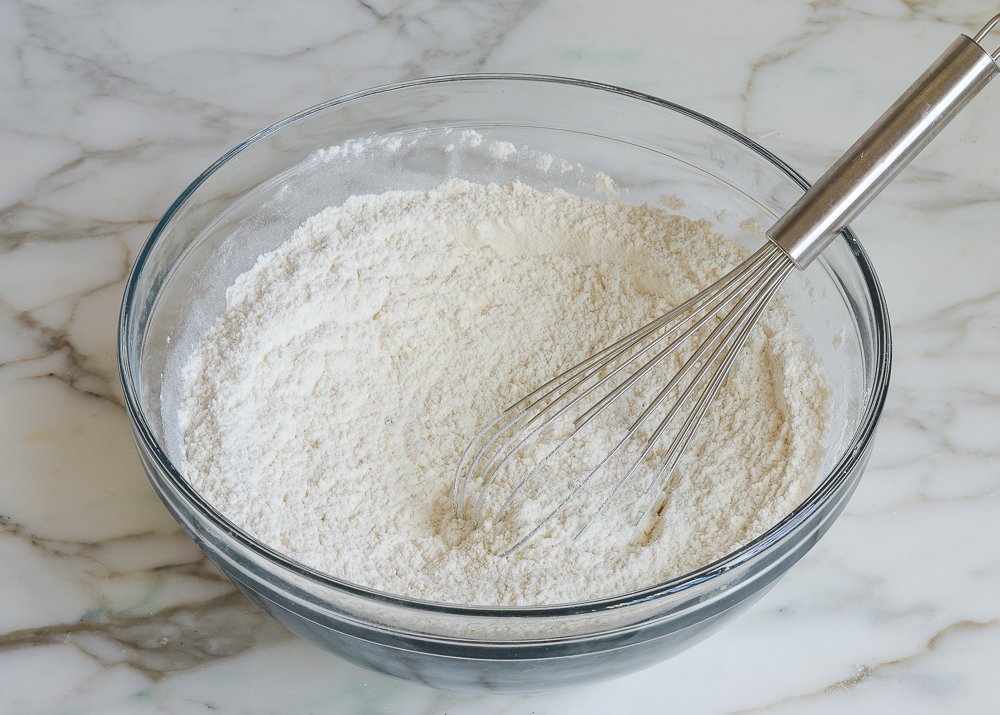
Add the liquid mixture to the flour mixture.
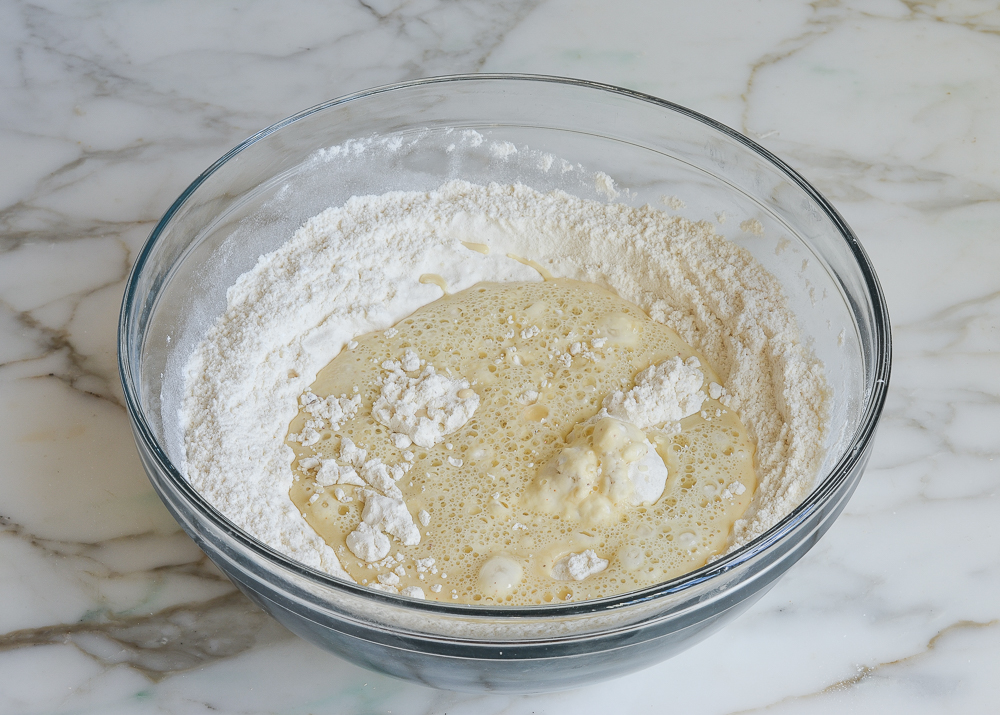
Stir with rubber spatula until the dough comes together. It should be a bit sticky.
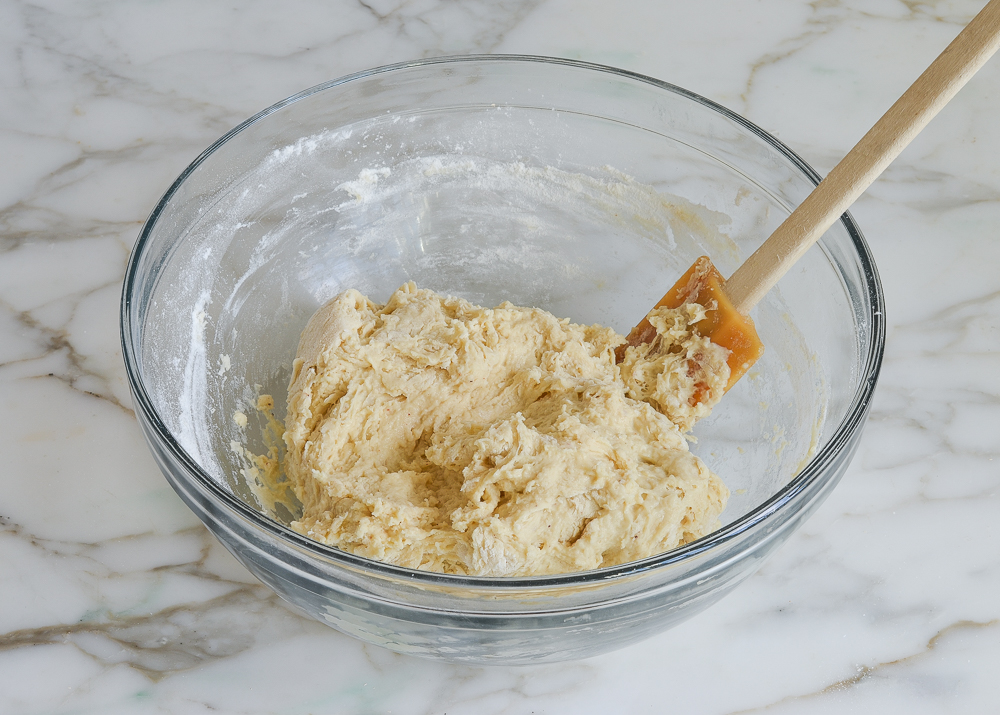
Cover the bowl with plastic wrap (no need to clean it first).
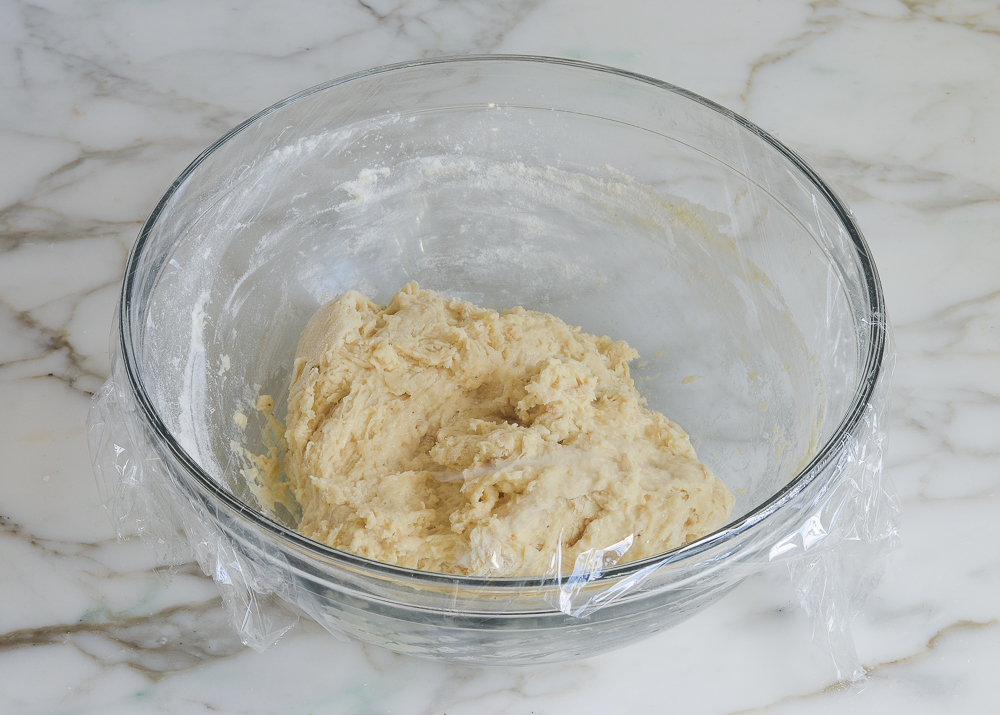
Let the dough rise on the countertop until doubled in size, 1 to 2 hours.
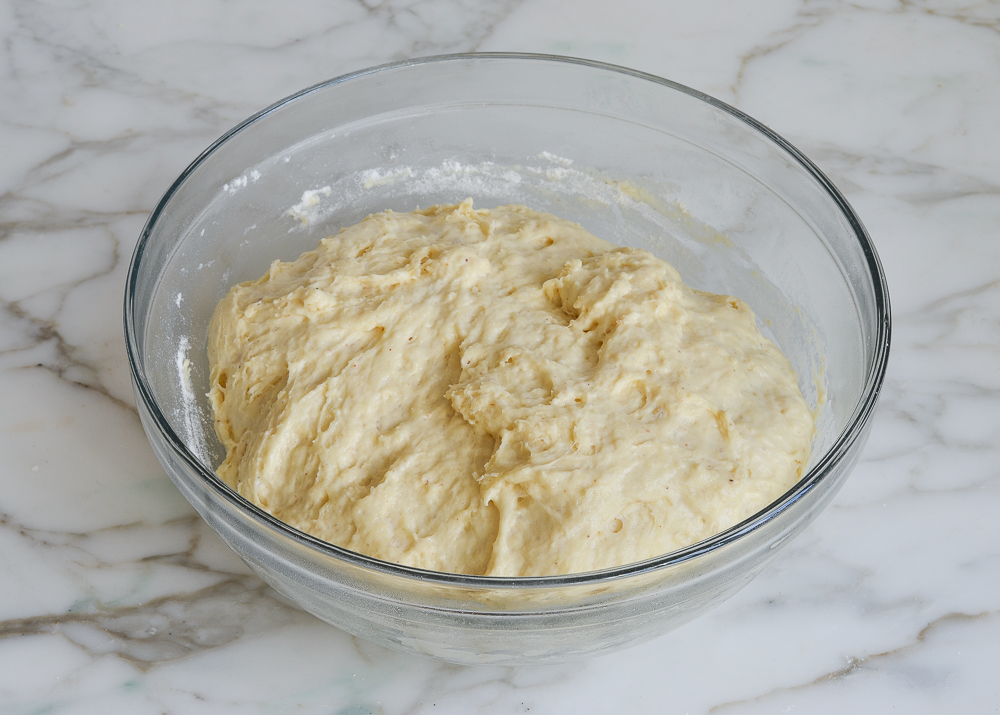
Line a baking sheet with a few layers of paper towels. Line another baking sheet with parchment paper and dust heavily with flour. Generously dust a clean countertop and your hands with flour. Scrape the dough out of the bowl onto the counter and dust the dough with flour.
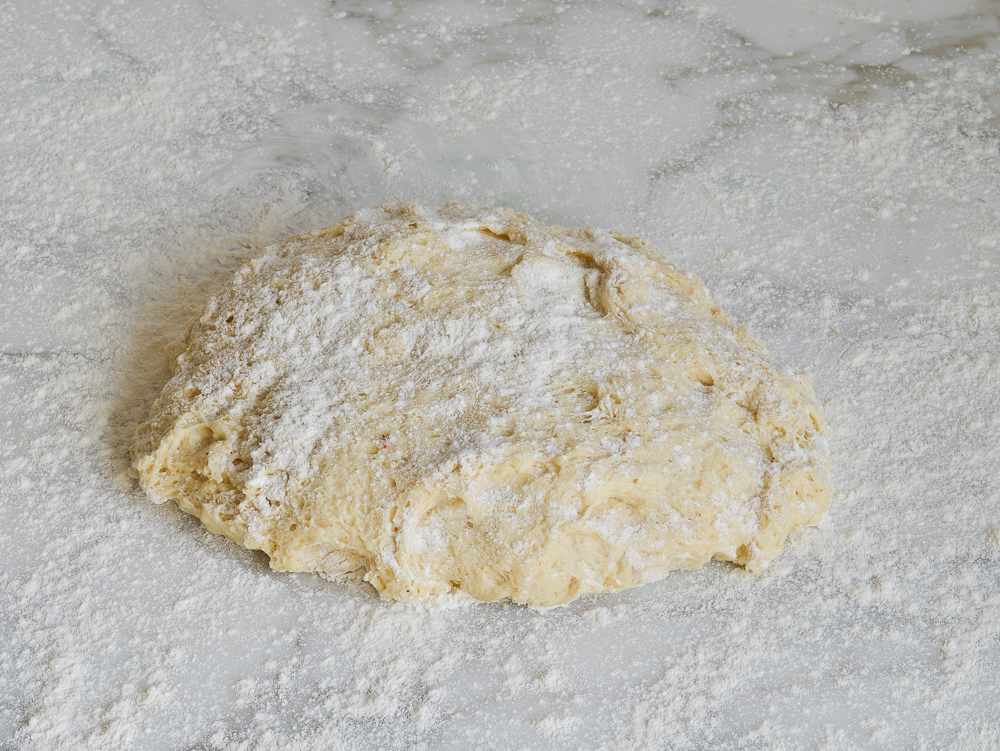
Pat the dough into 1/4-in-thick rectangle, making sure the bottom doesn’t stick and adding more flour to the counter and your hands as needed.
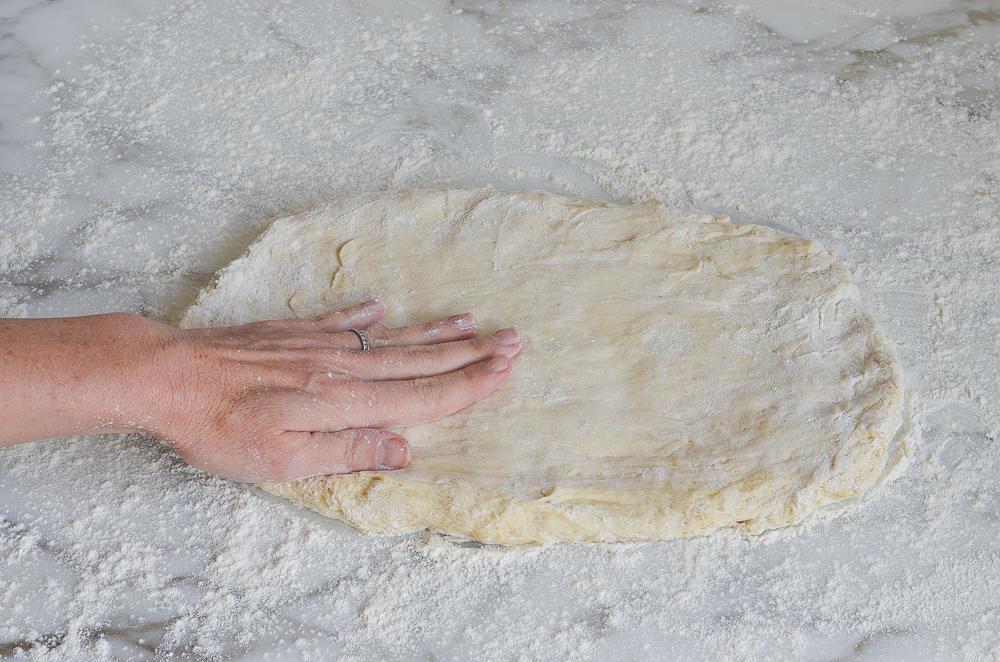
It should be about 10 to 12 inches in size.
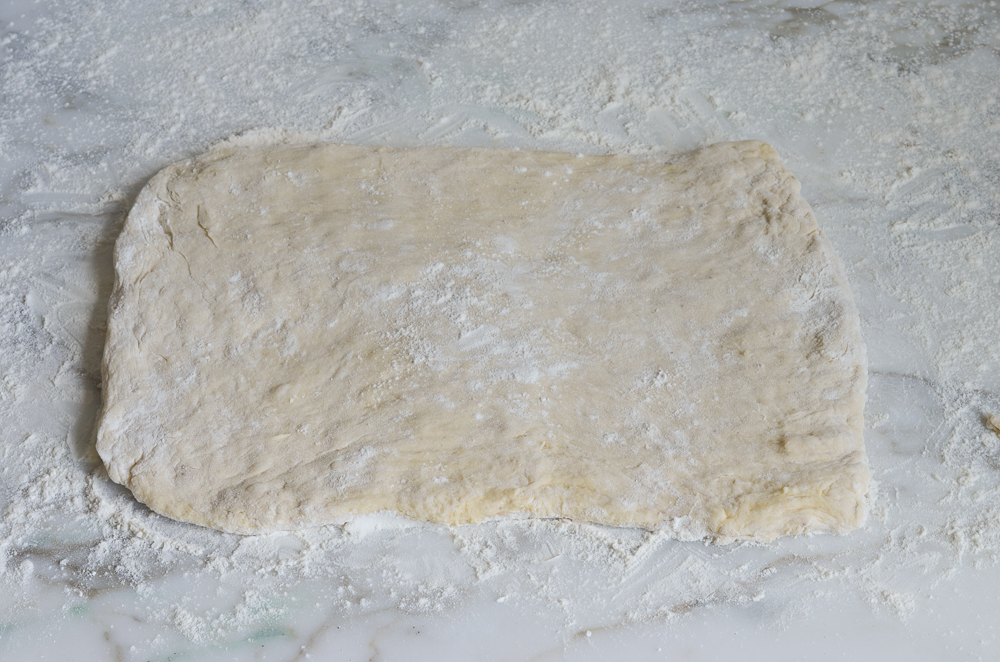
Using a pizza wheel or very sharp knife, cut the dough into 24 two-inch squares. Sufganiyot are traditionally round but I much prefer to make them square — you don’t need to worry about having the right-sized cookie cutter or patching together scraps of dough.
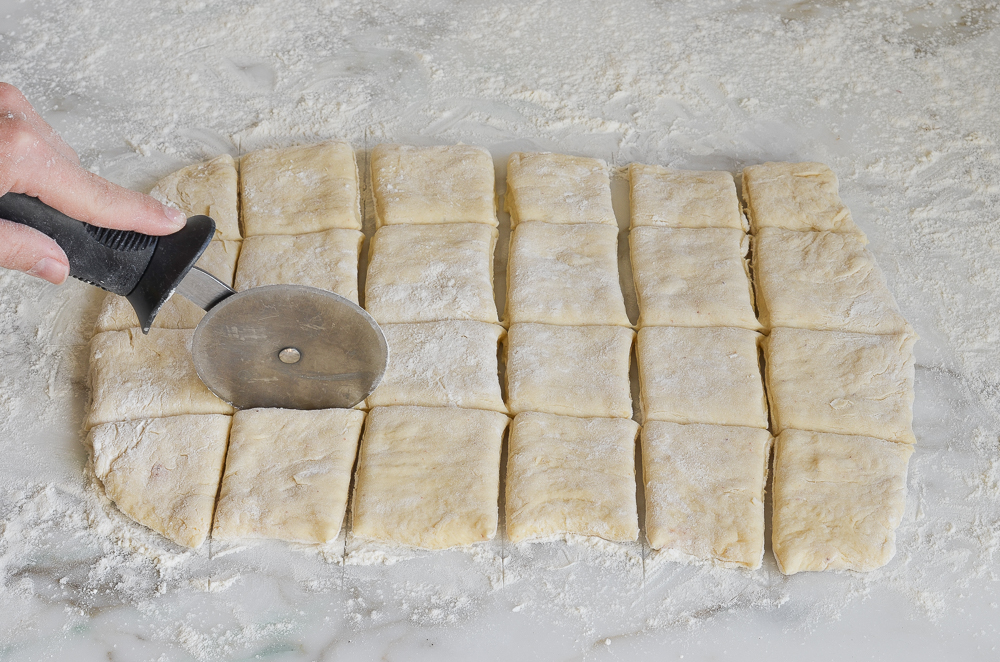
Transfer the dough squares to the floured baking sheet, leaving a little space between the squares. Sprinkle the squares lightly with flour.
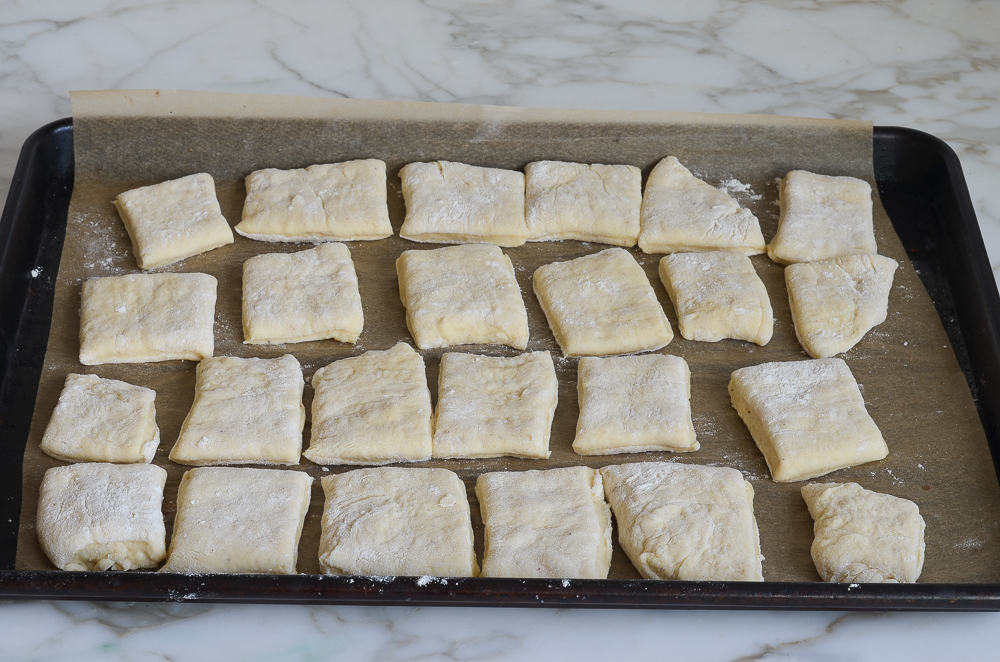
Add enough of oil to a large Dutch oven or heavy pot to measure about 2 inches deep and heat over medium heat to 350°F. (If you don’t have a candy/deep-fry thermometer, drop a 1-in cube of bread in the oil; if it takes about 1 minute to get golden brown, the oil is at the right temperature.) Place 6 dough pieces in the oil and fry until golden brown, about 3 minutes, flipping halfway through frying.
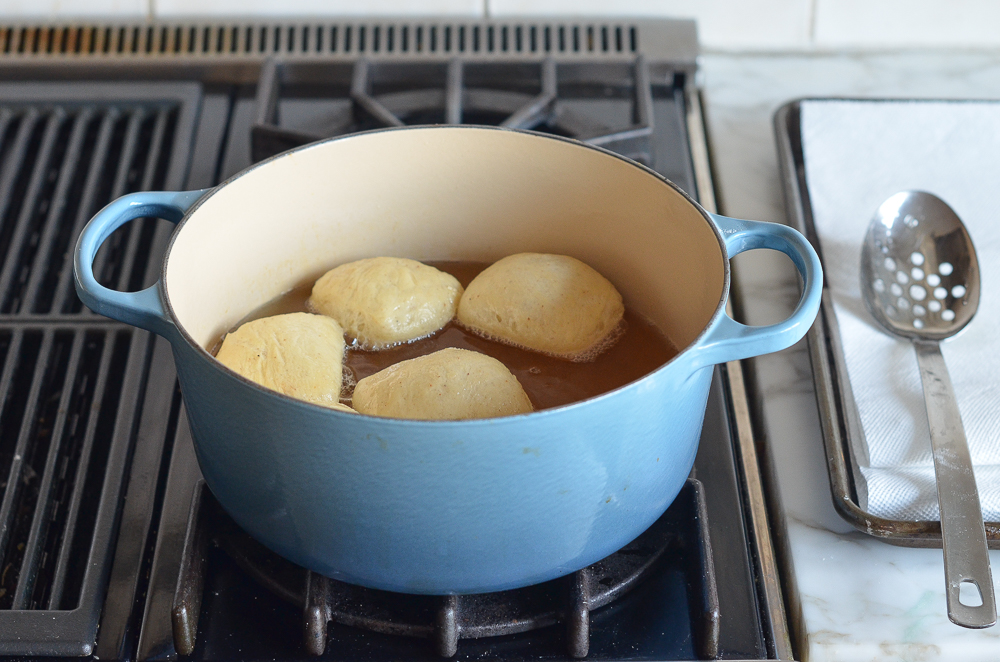
Adjust the heat, if necessary, to maintain the oil temperature between 325°F and 350°F.
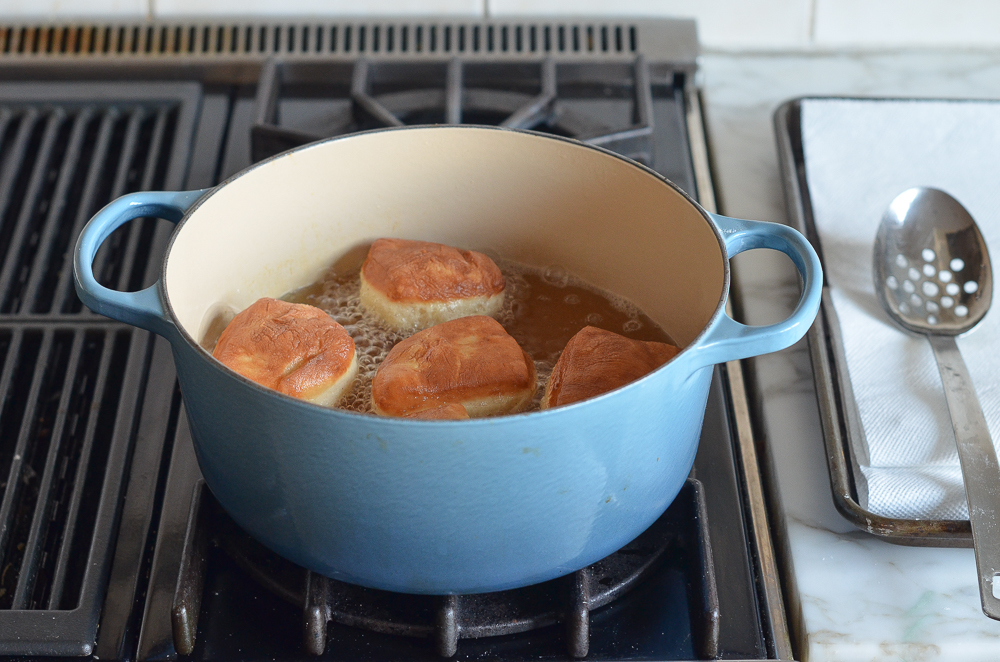
Using a slotted spoon, transfer the donuts to the paper towel-lined baking sheet. Repeat with the remaining donuts.
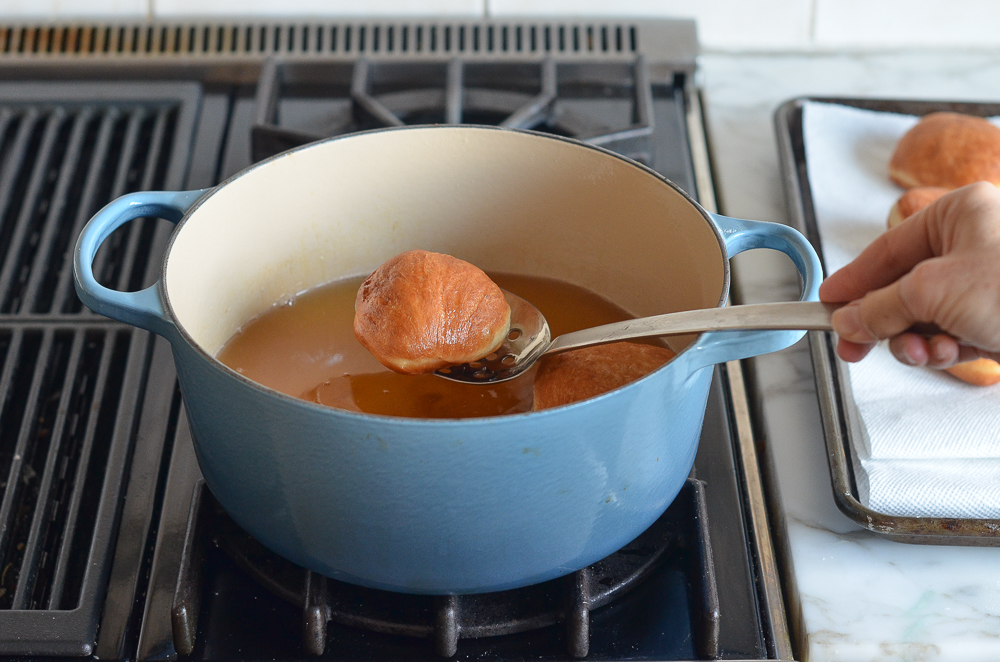
Use a paring knife to puncture the side of each to form a pocket in the center.
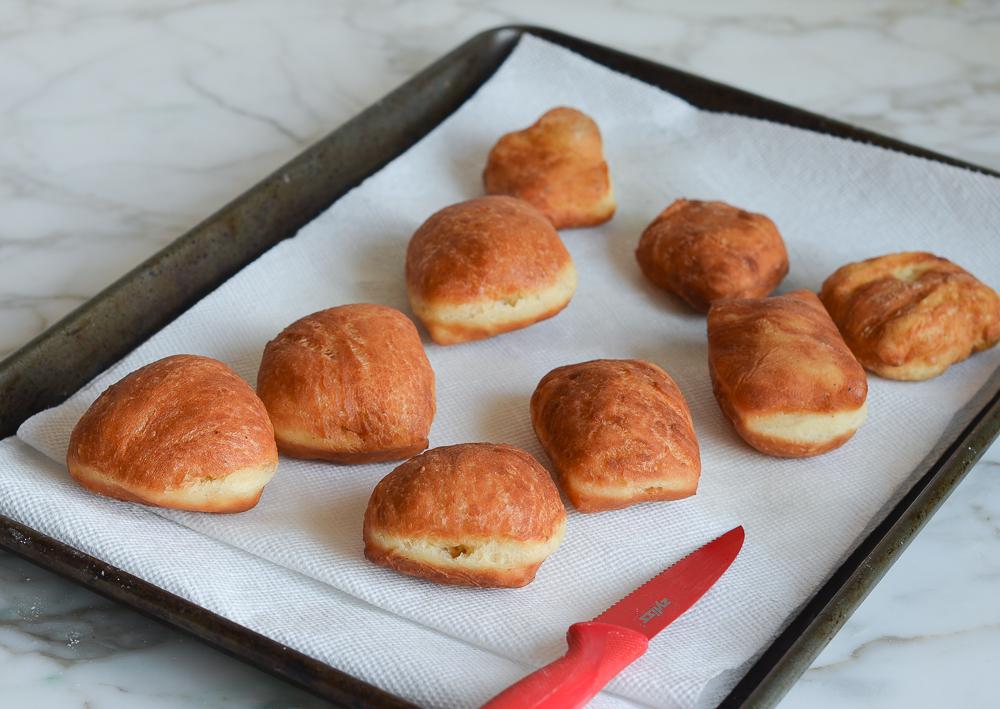
Place the tip of a squeeze bottle or piping bag into the pocket and squeeze 1 to 2 teaspoons of jam or jelly inside. (Alternatively, if you don’t have the right tools or just don’t want to bother, serve the filling on the side.)
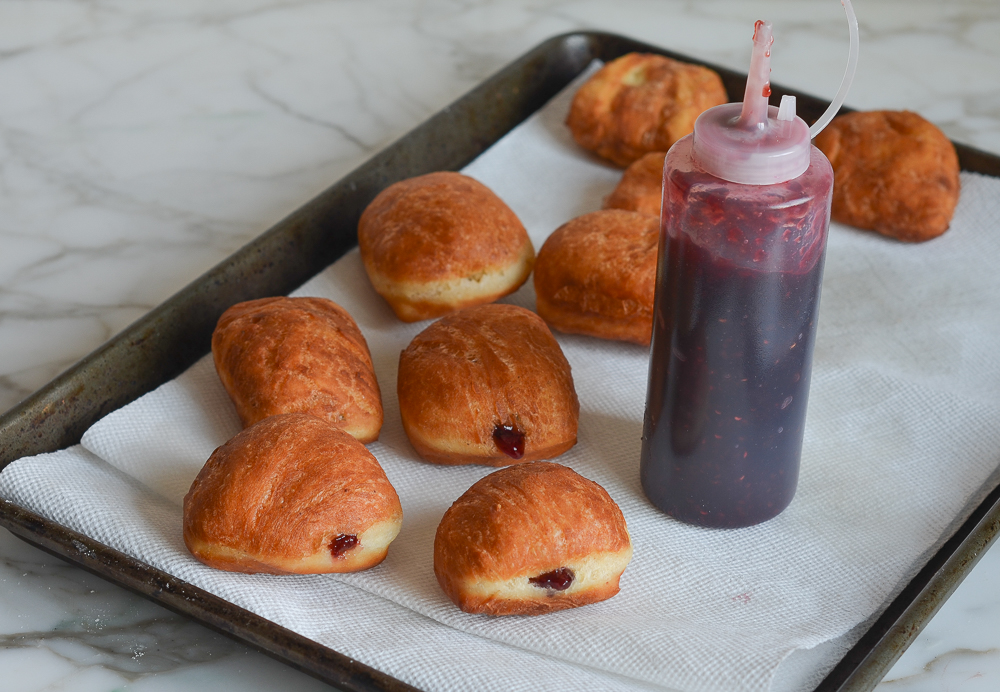
Using a fine sieve, dust the donuts generously with confectioners’ sugar. Serve warm.
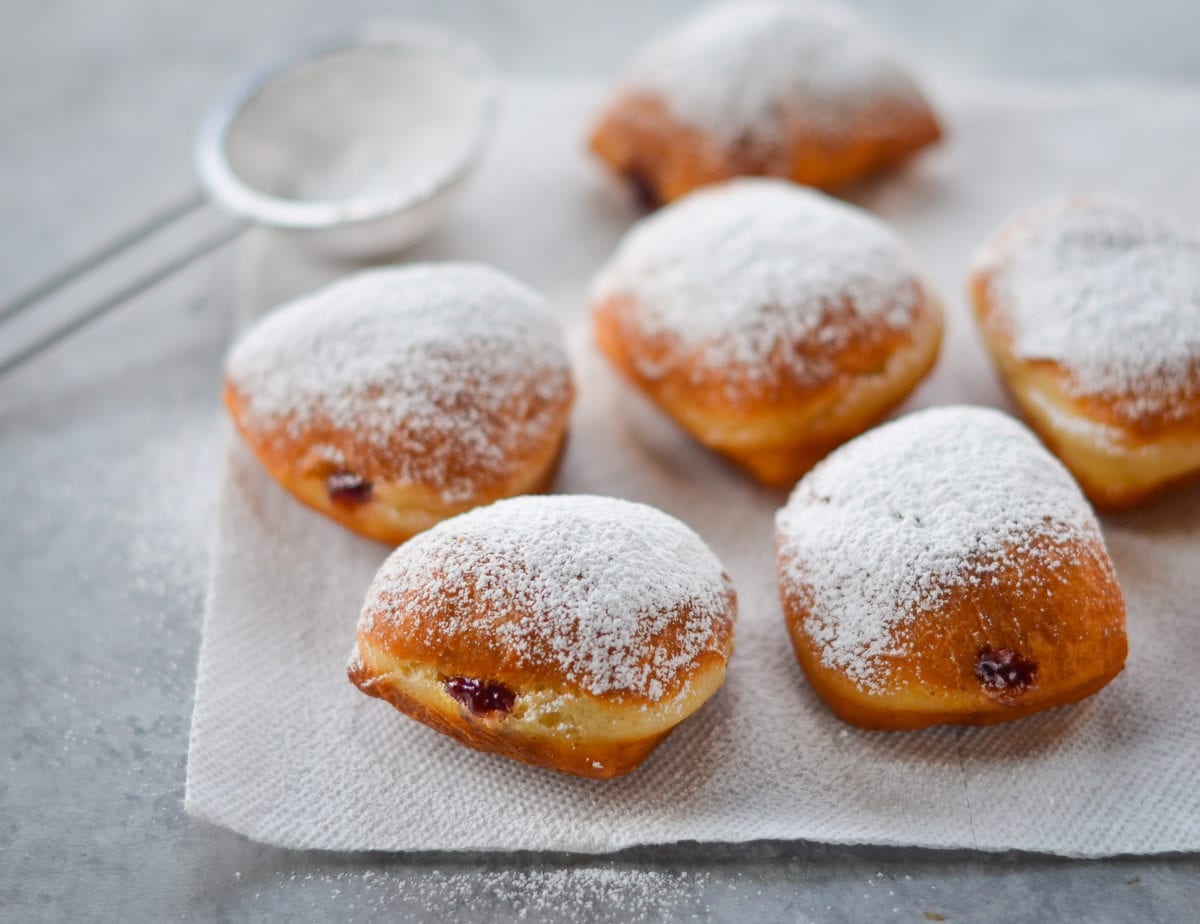
You May Also Like
Sufganiyot (Israeli Donuts)
A cross between a beignet and a jelly donut, sufganiyot are pillowy donuts that are eaten in Israel and around the world during Hanukah.
Ingredients
- 1 cup warm water, heated to about 110°F (see note)
- 1 tablespoon instant/rapid-rise or active dry yeast (note that this is more than 1 packet)
- 3 cups all-purpose flour, spooned into measuring cup and leveled-off
- ¼ cup confectioners' sugar, plus more for coating
- ¾ teaspoon salt
- ½ teaspoon ground nutmeg
- 2 large egg yolks
- 2 tablespoons vegetable oil, plus about 2 quarts more for frying
- 1 teaspoon vanilla extract
- About 1 cup jam or jelly (or custard, Nutella, pudding, pumpkin butter, apple butter, dulce de leche, etc.), optional
Instructions
- Combine the water and yeast in a small bowl and let sit until foamy, about 5 minutes.
- Meanwhile, in a large bowl, combine the flour, confectioners' sugar, salt, and nutmeg. Whisk to combine and set aside.
- Add the egg yolks, 2 tablespoons of oil, and vanilla to the water/yeast mixture and whisk with a fork until combined.
- Add the liquid mixture to the flour mixture and stir with rubber spatula until the dough comes together. It should be a bit sticky. Cover the bowl with plastic wrap (no need to clean it first) and let the dough rise on the countertop until doubled in size, 1 to 2 hours.
- Line a baking sheet with a few layers of paper towels. Line another baking sheet with parchment paper and dust heavily with flour. Generously dust a clean countertop and your hands with flour. Scrape the dough out of the bowl onto the counter and dust the dough with flour. Pat the dough into ¼-in-thick rectangle (it should be about 10 x 12-inches in size), making sure the bottom doesn't stick and adding more flour to the counter and your hands as needed. Using a pizza wheel or very sharp knife, cut the dough into 24 two-inch squares and transfer to the floured baking sheet, leaving a little space between the squares. Sprinkle the squares lightly with flour.
- Add enough of oil to a large Dutch oven or heavy pot to measure about 2 inches deep and heat over medium heat to 350°F. (If you don't have a candy/deep-fry thermometer, drop a 1-in cube of bread in the oil; if it takes about 1 minute to get golden brown, the oil is at the right temperature.) Place 6 dough pieces in the oil and fry until golden brown, about 3 minutes, flipping halfway through frying. Adjust the heat, if necessary, to maintain the oil temperature between 325°F and 350°F. Using a slotted spoon, transfer the donuts to the paper towel-lined baking sheet. Repeat with the remaining donuts.
- When the donuts are cool enough to handle, use a paring knife to puncture the side of each to form a pocket in the center. Place the tip of a squeeze bottle or piping bag into the pocket and squeeze 1 to 2 teaspoons of jam or jelly inside. (Alternatively, if you don't have the right tools or just don't want to bother, serve the filling on the side.)
- Using a fine sieve, dust the donuts generously with confectioners’ sugar. Serve warm.
- Note: Warm water helps activate the yeast. The temperature doesn't need to be exact so no need to use a thermometer; just try to get it about the temperature of bath water. (If you place your hand under the stream of water in the faucet, it should feel hot but you should be able to leave your hand there without it stinging.)
- Nutritional information was calculated assuming that approximately ¼ cup of the oil is absorbed into the donuts when frying and 1 tablespoon confectioners' sugar was used to dust the the finished donuts.
- Make-Ahead Instructions: The dough can be made a day ahead of time and refrigerated. Let it sit out at room temperature for about an hour before rolling out and cutting.
Nutrition Information
Powered by ![]()
- Per serving (24 servings)
- Serving size: 1 donut
- Calories: 138
- Fat: 4 g
- Saturated fat: 0 g
- Carbohydrates: 23 g
- Sugar: 8 g
- Fiber: 1 g
- Protein: 2 g
- Sodium: 78 mg
- Cholesterol: 15 mg
This website is written and produced for informational purposes only. I am not a certified nutritionist and the nutritional data on this site has not been evaluated or approved by a nutritionist or the Food and Drug Administration. Nutritional information is offered as a courtesy and should not be construed as a guarantee. The data is calculated through an online nutritional calculator, Edamam.com. Although I do my best to provide accurate nutritional information, these figures should be considered estimates only. Varying factors such as product types or brands purchased, natural fluctuations in fresh produce, and the way ingredients are processed change the effective nutritional information in any given recipe. Furthermore, different online calculators provide different results depending on their own nutrition fact sources and algorithms. To obtain the most accurate nutritional information in a given recipe, you should calculate the nutritional information with the actual ingredients used in your recipe, using your preferred nutrition calculator.

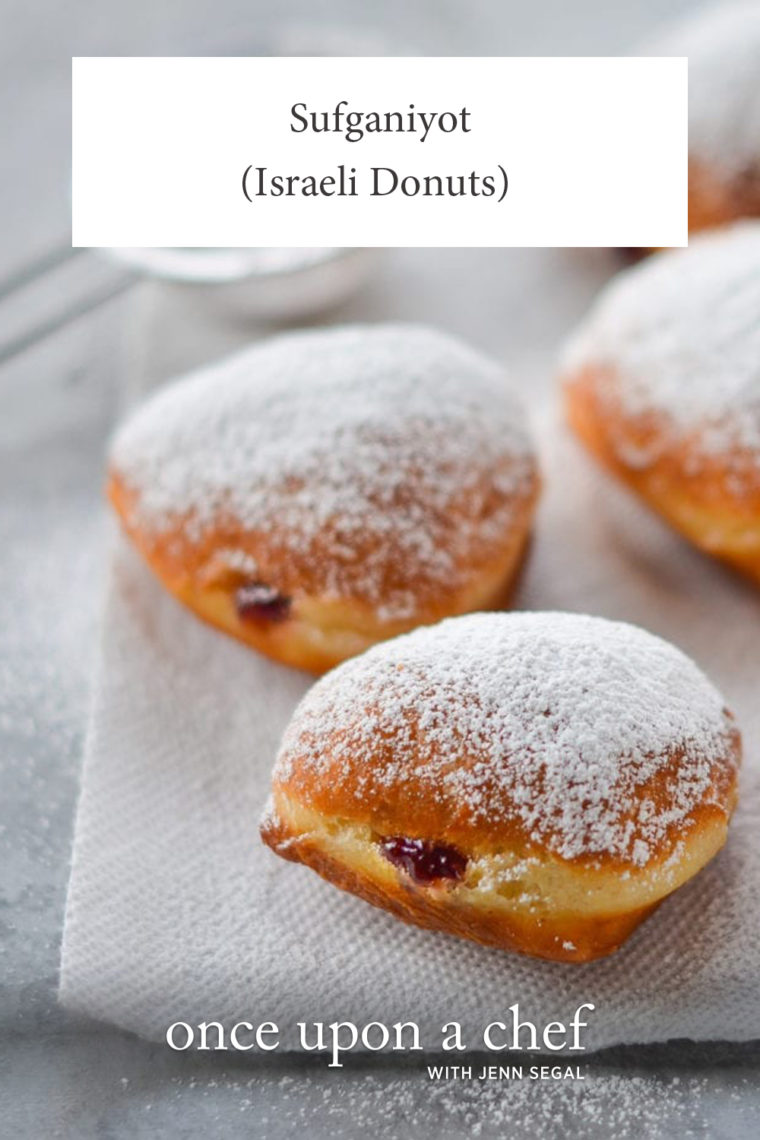
Who makes donuts? That’s why I was going to the donut shop! Who would ever make Bénignes? That’s an excuse to go to New Orleans 🙂 And sufganiyot? Never. Too complicated.
But with this recipe it was a challenge. And one worth taking on. I simply wouldn’t have considered it except that it was on once upon a chef. Jenn, you make all recipes seem “Doable” And this one is no exception.
I do love the details and the descriptions. And although I consider myself a cook, and I’d rather go to fun pictures are perfect and I follow your recipes exactly. This recipe is a treat and a big surprise when people find out that you made it yourself. Definitely a keeper. And not just for Hanukkah season.
Thank you for your very detail oriented recipes, I especially appreciate your putting weight alternatives, as for me, weighing flour and other ingredients is easier and more precise than measuring by the cup.
Hi Jenn! I’m excited to try these babies out! Question- what size is your Dutch oven? Can I use a big all clad steel pan or no for frying?
Thank you for the constant inspiration!! Happy Chanukah!
Hi Amanda, I have a 5-1/2 qt Dutch oven but you can definitely use your All-Clad for frying. Hope you enjoy them!
Fantastic!! Thank you!
Hi jenn. For consistency and accuracy, it would be really helpful if you provided the weight of flour instead of cups, as the amount of flour can vary depending on how one scoops or packs their flour. Thanks for giving us such great recipes
Hi Gillian, I actually provide metric conversions for most of my recipes, so you can find the weight of the flour by viewing those. To view them, scroll down to the recipe and immediately under the recipe title on the right side, you’ll see a little toggle. If you move it from “cup measures” to metric, you’ll see measurements that will work for you. 🙂
Time to make the doughnuts – I mean sufganiyot! I haven’t made these yet, nor do I have a question-yet-but I just wanted to say Happy Hanukkah and thank you for the great recipes!
Ha! My husband says that every single morning when he leaves the house. Happy holidays to you, too! ❤️
Can I let the dough sit overnight refrigerated?
Sure, Erin, I think that would be okay. Enjoy!
Hi Jenn, is there any way to make it gluten free?
Hi May, It may work, but I’ve never made them with gluten-free flour so I can’t say for sure. Often times, a reader will report back after trying something with gf flour, but it looks like your the first person asking about this recipe so you may have to be the guinea pig. 🙂 Please LMK how they turn out if you make a gluten-free version!
Did the overnight rise work? Did you let come to room temperature before rolling out?
Can you air fry them?
Hi Sandra, I don’t have an air fryer and don’t know much about using one so it’s hard to say for sure – I’m sorry! You may find these tips helpful in converting traditional recipes to air fryer versions. Hope that helps at least a bit (and if you try them in an air fryer, please report back)!
As I live alone I’m wondering if these could be frozen after they’re fried but before they are filled???
Hi Joanne, These are really best fresh but I think you could freeze the dough. I would make the dough, let it rise, cut it into squares, then freeze in a single layer until solid. Once firm, I would wrap each doughnut in plastic wrap or place a bunch of them in a plastic freezer bag. Just be sure to defrost the frozen dough before frying. You can also easily halve the recipe. Hope that helps!
These are amazing. My teenage son said, ” Mom, these are a 6!” As I raised my eyebrows at him, he added with a grin, “A 6 out of 5! These are beyond birthday level!” They are truly amazing, and easy peasy to make (not sure this is a good thing….) Thank you for a great recipe and Happy Hanukkah!
Happy Hanukkah to you Deniza (and so glad these were well received)! 🙂
These look yummy! I live in 8,519 ft elevation. Any suggestions?
Hi Elaine, I don’t have experience baking at high altitudes so, unfortunately, I don’t have any wisdom to share – I’m sorry! You may find these tips helpful though. Hope you enjoy if you make them! 🙂
Elaine (and Jenn), I looked up your problem, thanks to my favorite search engine. (We all have one, right?) Here’s a fabulous page with the suggestions related to your elevation for yeast-based recipes:
https://www.wheatmontana.com/content/high-altitude-baking-how-make-your-recipes-work-mountains
Hope that helps.
Hi Jen – these look good/fun. Have you heard of aebleskivers? I discovered them recently when someone gave me an aebleskiver cast iron pan – they are similar, fun to make, and perhaps a tad more heart-healthy? Look forward to trying these. Were sufganiyot part of the indigenous middle eastern cuisine or was the recipe brought over by European settlers?
Hi Dabney, No, I haven’t heard of aebleskivers! And aside from the symbolism of frying sufganiyot in oil to recognize the miracle of Hanukkah, I don’t know much about the history of them. Hope you enjoy if you make them! 🙂
Happy Hanukkah Jen! I hope your holiday is very special for you and your family. Thank you as always for your wonderful recipes! Seeing this recipe brought back fun memories for me; several years back, when my daughter was a girl scout, her troop participated in an International Food Festival. I suggested that our troop represent Israel, since most of the troops choose the usual countries, ie: France, Italy, Germany, China etc. Well, we had a ball researching Jewish/Israeli recipes and I even learned how to dance to Hava Nagila, and taught the girls – let me tell you, the guests at the festival loved it! We served challah, rugalach, and other specialties and I made these doughnuts. What a fun day! I would love to try your Sufganiyot recipe, but I would like to ask a question: Once the doughnuts are fried, filled and sugared, how long do they keep? The recipe I used didn’t keep very long. I’d appreciate any feedback you can provide. Thanks!
Love that! The donuts are best enjoyed fresh and warm but they keep well for a few hours.
Hi Jenn,
I love all your recipes–you are my go to person when it comes to cooking. So here is my question… I have made many different kinds of doughnuts in the past but none of them come out like the authentic israeli doughnuts that are dense and yet fluffy. Is this recipe like the Israeli ones?
So glad you like the recipes, Daphna! I wouldn’t really describe these as dense – they are on the fluffier side. Sorry!
Daphna, I was determined to make sufganiyot this year and tested Jenn’s recipe against one by a famous chef on an equally famous site (I’m really not trying to bash him, you see). I was doubtful about the one offered by that famous chef since I make a wicked cinnamon bread and the ingredients seemed to me to be along the lines of my bread–but not as Jenn described it: “fluffy little pillows.”
The other person’s recipe was good–I guess. It wouldn’t have competed with my bread or sufganiyot. To me, the other recipe was a poorly made bread with a modicum of flavor, nothing to write home about. I felt one could have had about the same with less work by spreading jelly on a piece of toast. One could easily tell the other recipe was more like a bread. Now perhaps *you* would like it, but Jenn has me as a fan now. She beat out the recipe on the other site by a one-person landslide. 😉
Jenn’s is definitely light and fluffy, and you wouldn’t want it any other way. It’s easy if one just reads and makes sure to read *every* word. However, even if the first attempt ends up being one of those where you realize *after* you put the yolks and oil in the flour and *then* see, “Oops! Before, Doofus!” pluck the egg yolks and oil out of the flour as best you can and don’t cringe too much as you stand there with some flour now in the yeast mixture (with the egg yolks and oil). Mix it well, and you’ll still be on the right path with the recipe.
Hi could I substitute water for milk and use butter instead of oil? Thank yuh
Yes, that should be fine, Simone (although you’ll still need to use the oil for frying).